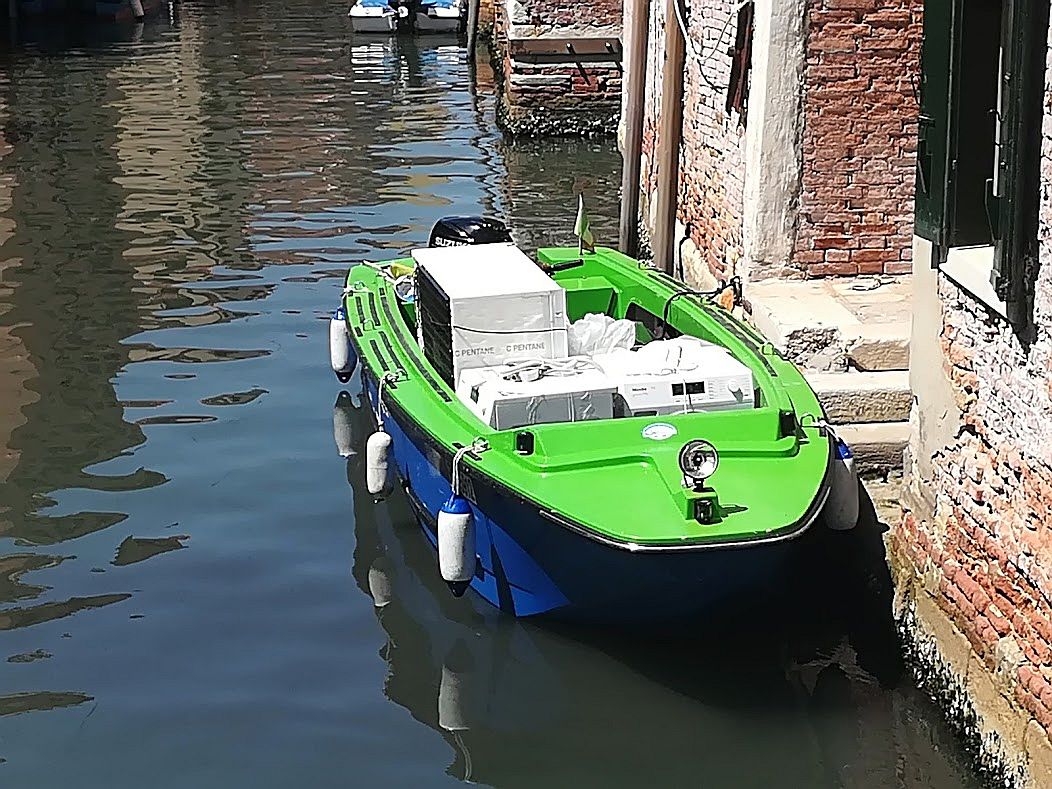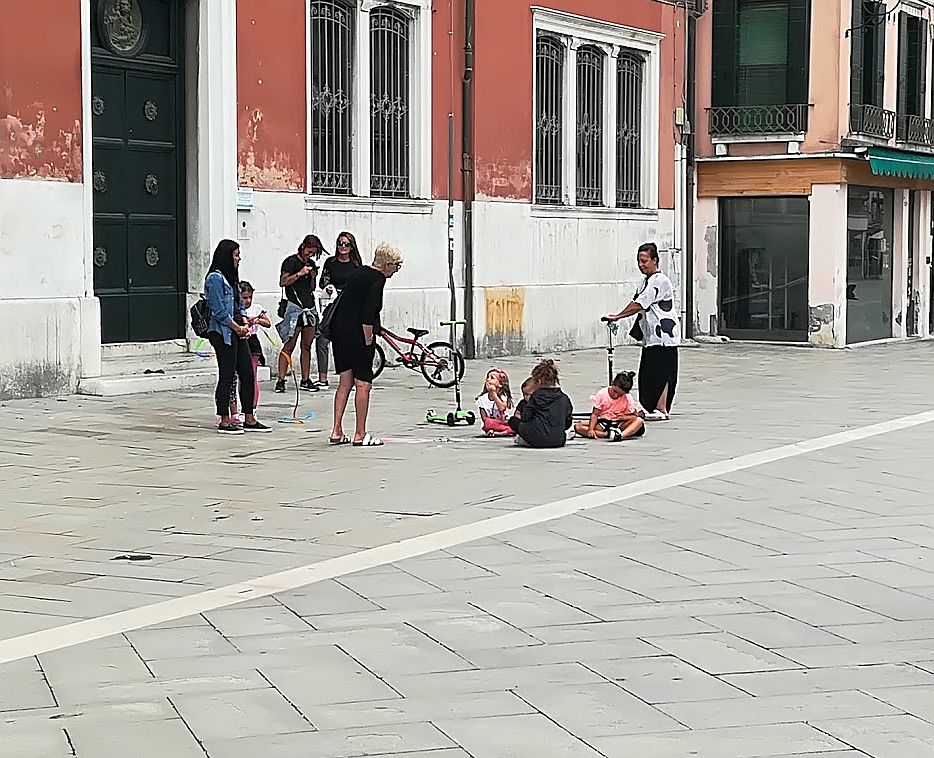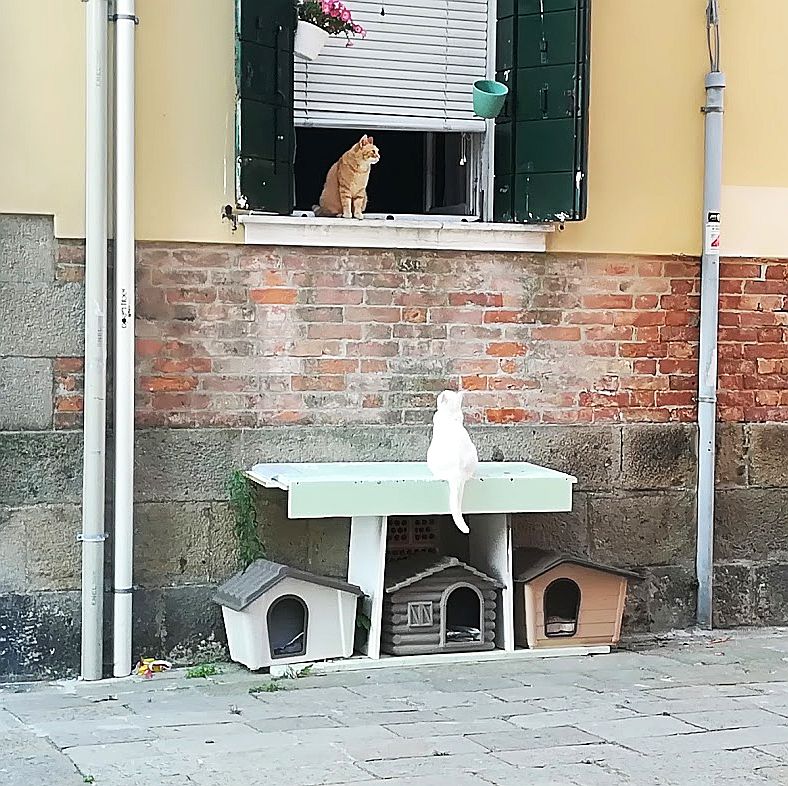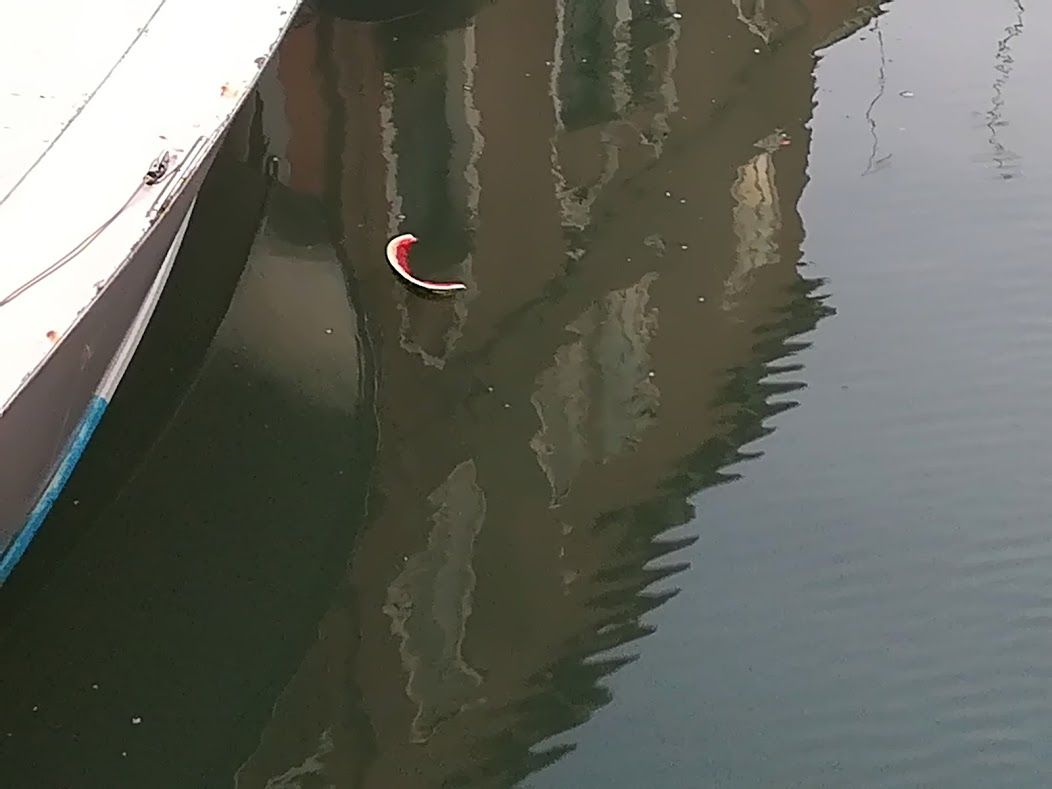I have seen a tourist. I have heard a foreign language. I have seen a taxi and a gondola. I have heard the muffled roar of an airplane taking off. I have seen a barge carrying bags of hotel laundry. And I’ve heard the deep crackling sound of a rolling suitcase. I noticed each one of these, over the past month or so, as a faint, flickering sign of a pulse that could mean that Venice is returning to life.
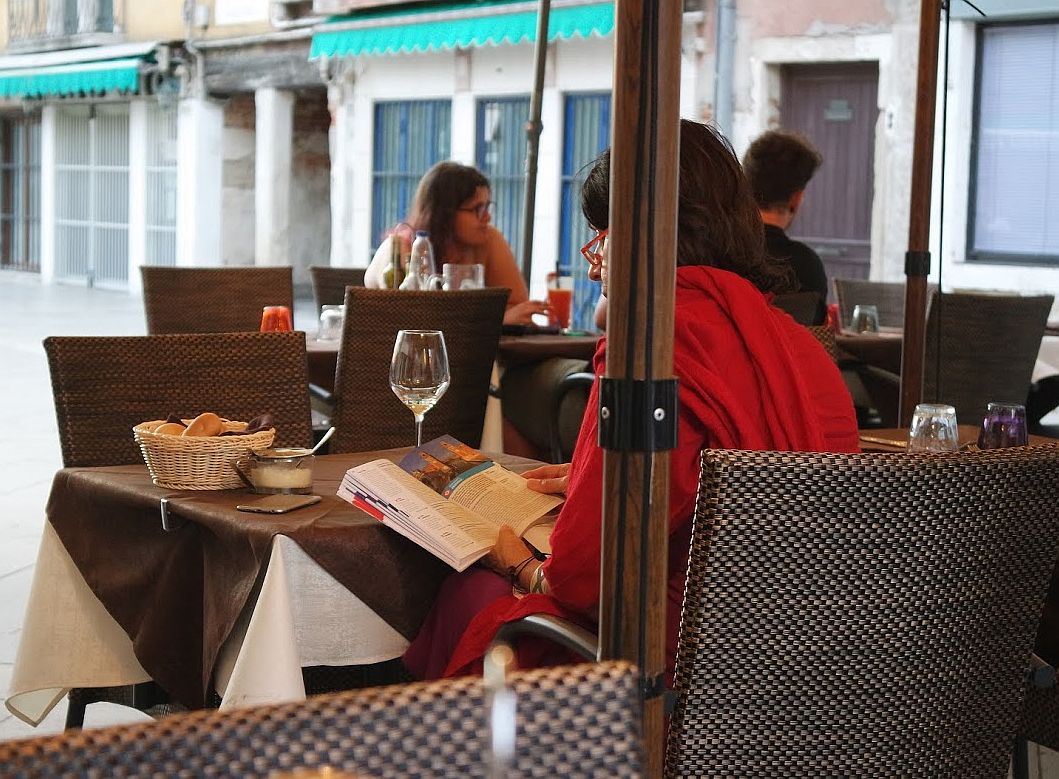
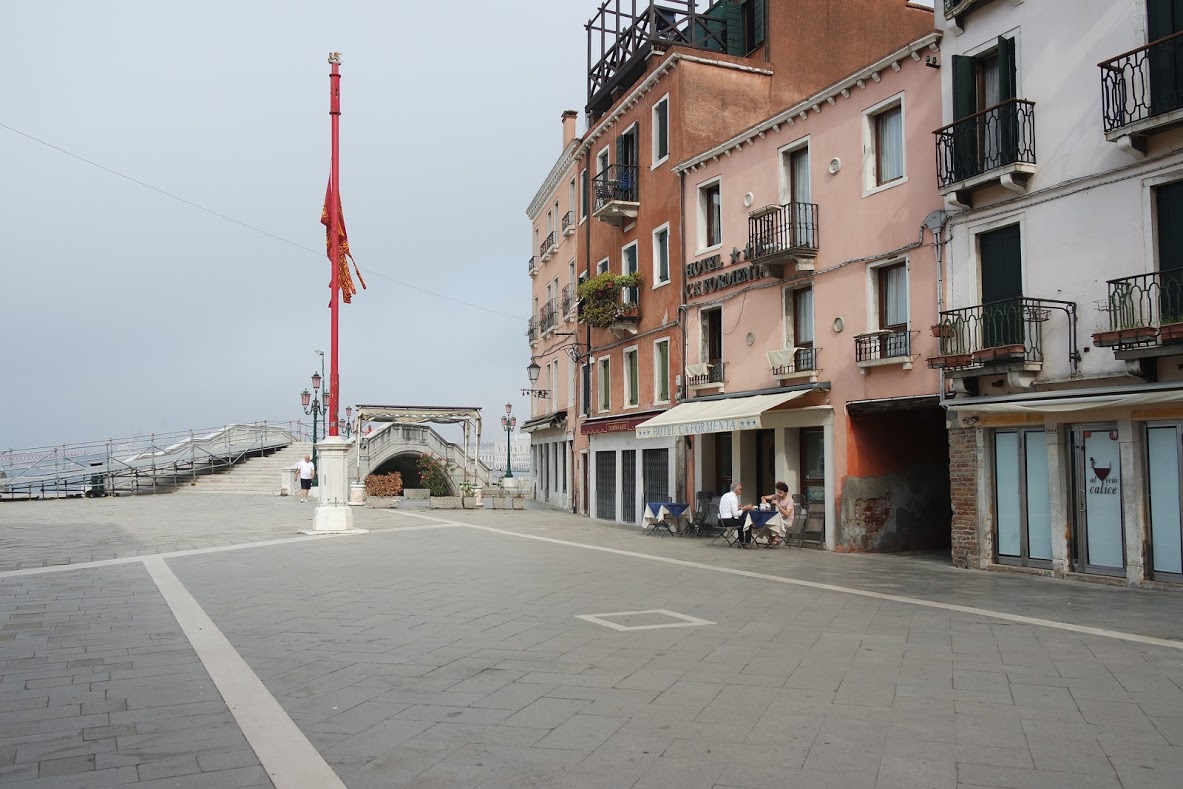
Not to belabor the metaphor, but it’s one thing to survive a near-death experience, and another to get well. Things are still bad; tourism is making only a tentative, baby-steps recovery. It’s all very little, and for this year, too late for anyone to begin to feel good. But as I say, there are signs.
It was natural for non-Venetians to imagine that life here under quarantine must have been beautiful without tourists. Au very much contraire — it’s been a mar de lagrime (sea of tears), as they say here, because everything in Venice lies at some point on six degrees of separation from tourism.
Having said that — just as an aside — don’t think that the economy of the nation is built only on gelato and selfies at the Leaning Tower. Here’s a fun fact: Italy is the second-ranked industrial country in Europe; in 2019, over 75% of the EU’s value of sold industrial production was generated by six Member States: Germany (28% of the EU total), Italy (16 %), France (12 %)… Of course, tourism is called an industry, too, but I don’t think you can say a country produces it in the same way it produces eyeglasses, machinery, pharmaceuticals, clothing, cars and — wait for it — robots.
But let’s get back to tourists. (Yes, it’s unfortunate that you can’t have tourism without them.) Italy is the fifth country in the world, and third in Europe, in terms of international tourist arrivals. In 2018, tourists from abroad made up 86.6 percent of all visitors to Venice. (Domestic tourist arrivals in 2019 were a small, but perfectly formed, 747,000.) Arrivals from anywhere in the world since March, 2020: …. Five? One official estimate suggests that Italy won’t be back to pre-pandemic levels of tourism before 2023.
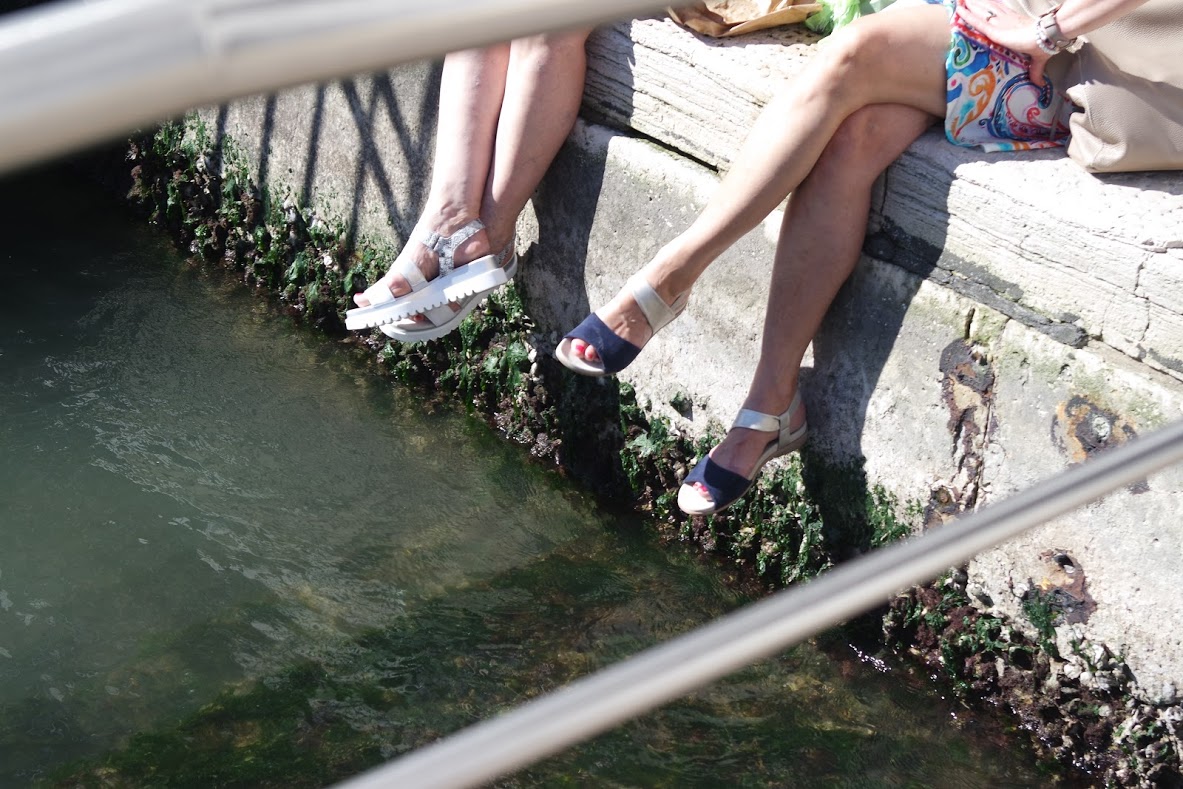

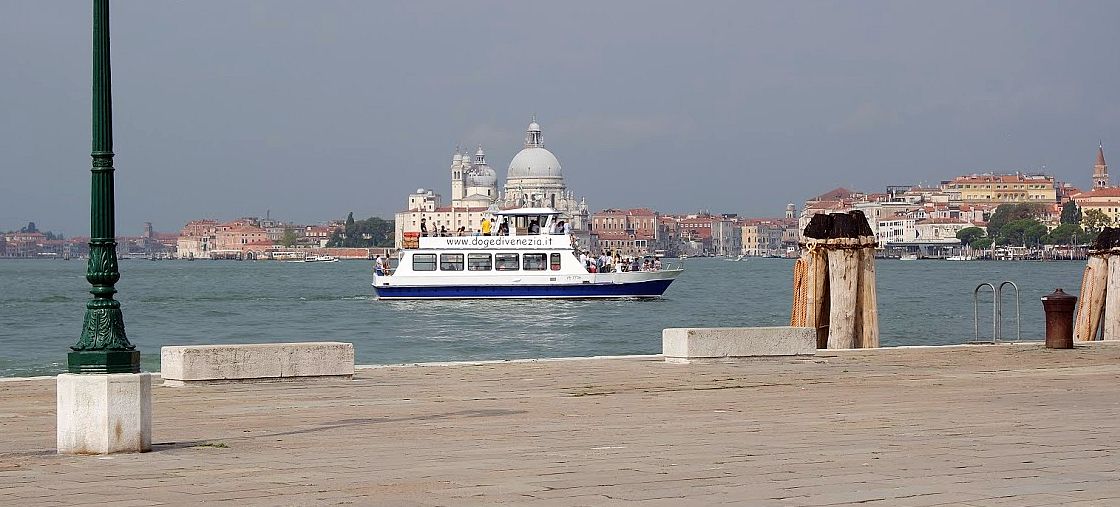
Many hotels are now open, but with reduced staff and reduced numbers of guests, too. The shops are offering dramatic sales, from 50-70 percent off. Gondoliers are working at ten percent of their usual summer load; instead of working three days and staying home two, their normal scheme, they’re working two and staying home three to allow everyone to make at least some money. A friend who has a small jewelry store near San Marco has been opening only two days a week. Many museums are not fully reopened. Baby steps.
True, towns and businesses all over Italy (and world) are undergoing the same crisis; it’s not just Venice, obviously. But I noticed it more vividly via the gondoliers. Not that I had any special concern for or about them, but I had never reflected — nor had they, I suppose — on how dependent on tourism that they had become. I suppose a taxi-driver can adjust his fares, because taxis are always useful. But nobody has to take a gondola.
So: First there was the collapse of tourism following the acqua granda of November 12, 2019. That cataclysm terrified tourists, who cancelled bookings for fear of finding themselves floating out to sea if they came here. Then the quarantine. The faucet (to return to my symbolism) that had seemed to the gondoliers to be perpetually open suddenly shut completely. And therefore the same crisis has struck the three gondola-builders. After the damage inflicted by the high water/hurricane, their business has also stopped. One builder told me that he has had five cancellations of orders for new boats, which amounts to the income of an entire year.
So we’re not what I’d call happy without tourists, no.
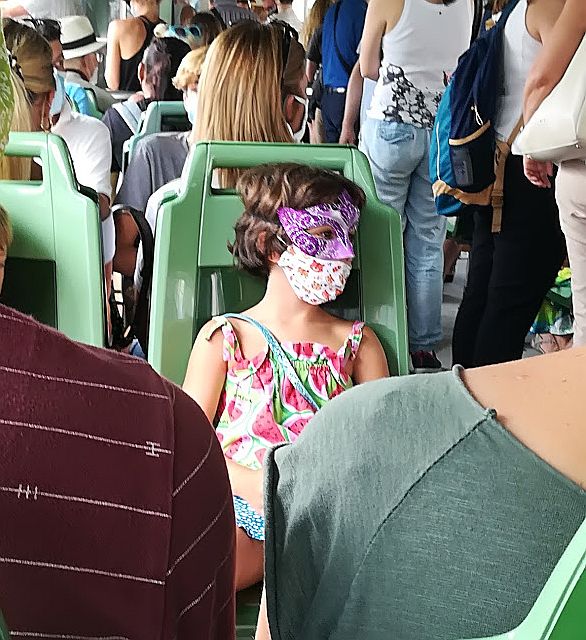
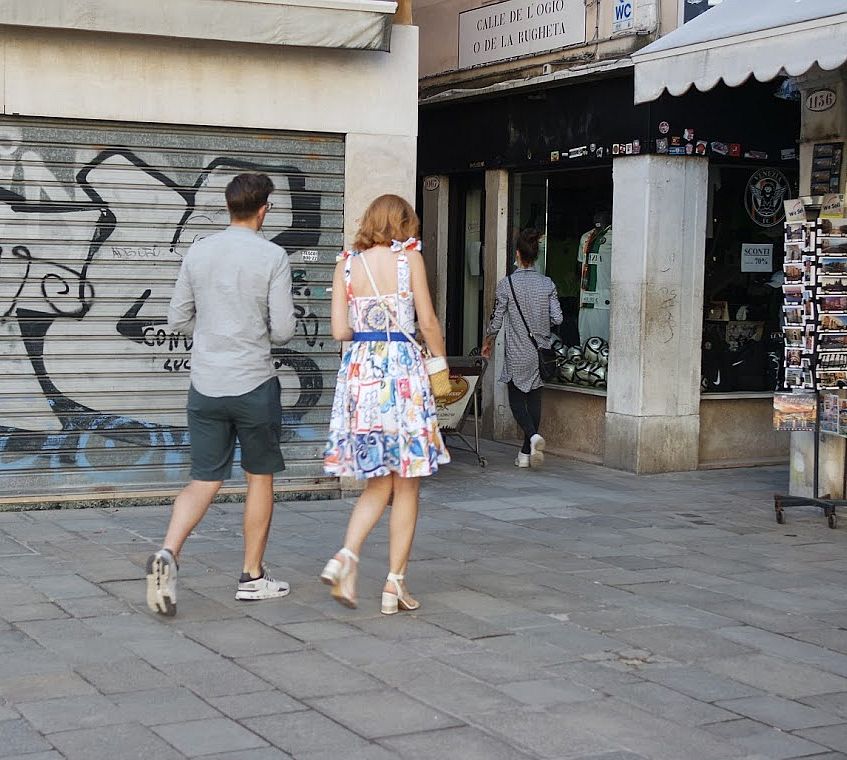

Two months have passed since the end of the lockdown and businesses are struggling. Judging by how many restaurants there are here, I’d have thought people come to Venice just to eat, but “The restaurant situation is extremely serious,” says Ernesto Pancin, secretary of Aepe (Associazione Esercenti Pubblici Esercizi, Association, or Association of Public Businesses),with some 800 restaurant/bar members in the historic center.
“Today between 60-70 percent of the restaurants have reopened,” he said, “but they have only 30-40 percent of the work and income they had last summer. They can’t manage to cover expenses — especially the rent — and the personnel is reduced. The absence of customers is really felt during the week, while the weekend flow is hanging on. But the weekend earnings aren’t enough to make ends meet.” People who have been working from home don’t go out to lunch; people on unemployment don’t have the money to eat out, and people in general are less inclined to go out, period. In some restaurants, the owner is waiting tables.
“We’re living day by day,” said Bonifacio Brass, owner of the Locanda Cipriani at Torcello, told a reporter for La Nuova Venezia. “We’ve had Italian customers, above all… Naturally we’re working mostly on the weekend. Lots of Venetians are coming in their boats, but meanwhile there has been a cutback in the vaporettos.”
For those of us trying to live a normal life, there’s the looming problem of the 570 family doctors in the 44-commune “province” of Venice. The national health system requires you to be linked to some basic doctor — your choice — who is your first stop in the world of medical assistance. Any visit to a specialist requires what I call a “work order” from your doctor. Now we find out that within five years, half of them will retire.
Unless replacements are found in a timely manner, the remaining doctors could have as many as 1,600 patients on their rosters.
